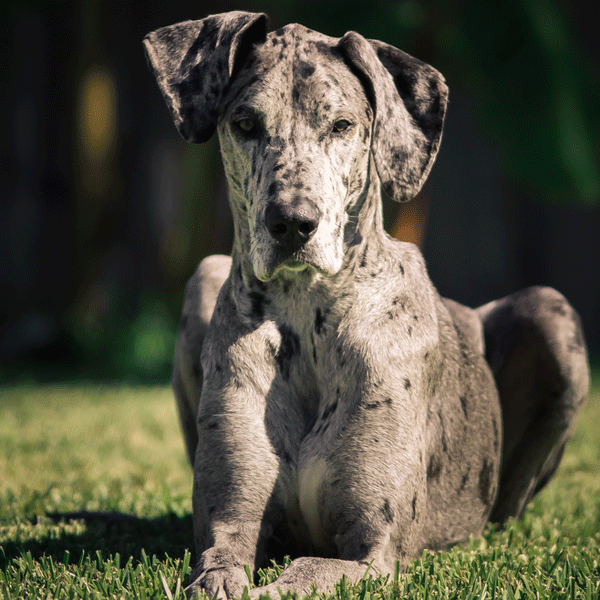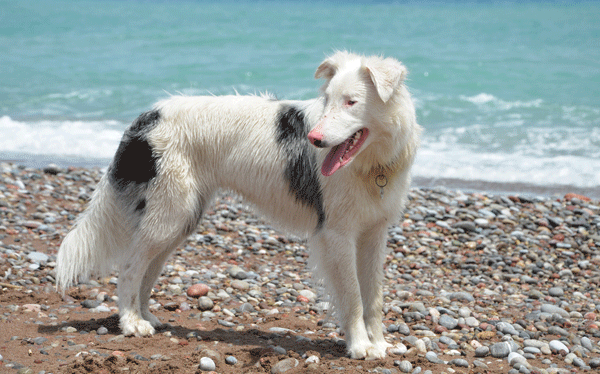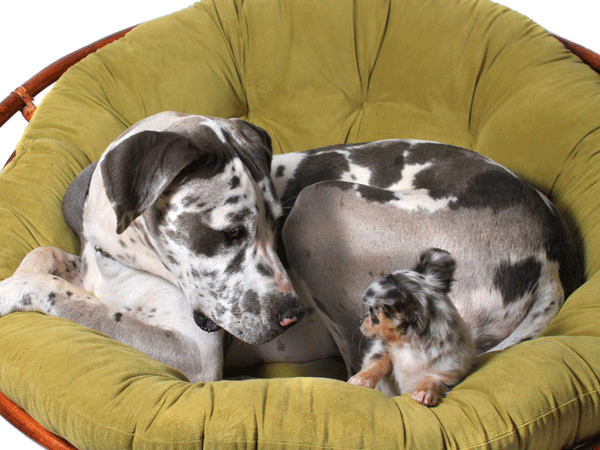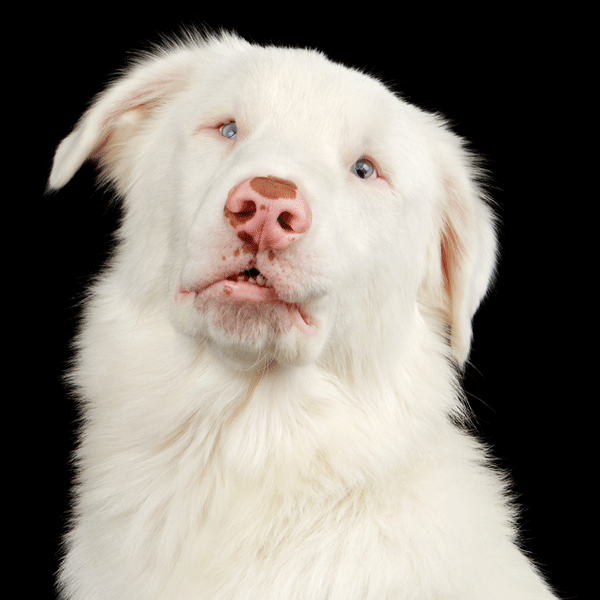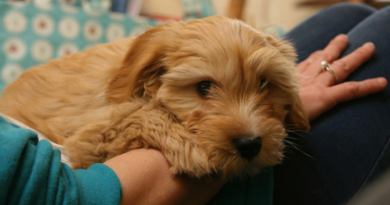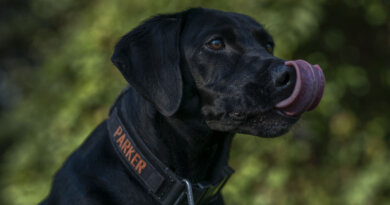The Problem With Merle Coat Patterns in Dogs
Merle — that kaleidoscope of swirly patterns that has no two dogs looking alike. It’s one of the most beautiful coat patterns in the dog world. But merle is definitely a case where too much of a good thing is, well, a bad thing.
The merle (also called dapple) pattern is the pattern in which random splotches of dark pigment are overlaid over a lighter shade of the same color. It’s commonly seen in Catahoula Leopard Dogs, Australian Shepherds, Collies, Shetland Sheepdogs, Dachshunds, Cardigan Welsh Corgis, Great Danes, and less commonly in many other breeds such as Chihuahuas, Border Collies, Pyrenean Shepherds, Beaucerons, Pomeranians and Cocker Spaniels.
Why you shouldn’t breed two merle dogs together
Merles are popular, so it seems only logical to breed two merles together to get more merles. No. Don’t do it.
The merle pattern is produced when a dog has a single copy of the M< allele. All merle dogs have the genotype Mm — meaning they have one allele for merle and one allele for non-merle. All non-merles are mm. If you breed a merle (Mm) to a non-merle (mm) you will on average produce a litter in which a half of the puppies get the M allele so are Mm (merle) and half get the non-merle allele so are mm.
But if you breed two merles together (Mm X Mm) you will produce on average a quarter mm (non-merle), a half Mm (merle) and a quarter MM (double-merle; also called double-dapple). And double merles don’t look like merles. Instead, they’re mostly white with merle patches. But the main reason you want to avoid producing MM dogs is that they often have visual and auditory problems.
What are the specific health concerns for merles?
If you like tech-talk and numbers, read this; otherwise, skip ahead: In a study of several merle breeds, merles with one copy of the M allele had a rate of 2.7 percent deaf in one ear and 0.9 percent deaf in both ears; double-merles had a rate of 10 percent deaf in one ear and 15 percent deaf in both ears. Interestingly, the rate in merle Catahoulas (5.9 percent) was lower than that in other breeds (for example, 9.4 percent in merle Australian Shepherds), and especially lower in double-merle Catahoulas (10.3 percent) compared to other double-merles (55.7 percent in Aussies and 85.6 percent in all other breeds combined). The lower incidence in Catahoulas may reflect the smaller amount of white Catahoula double-merles tend to have. Again, nobody knows why. Blue-eyed merles have no higher incidence of deafness than brown-eyed merles.
Just because a dog is double-merle, don’t assume he’s deaf. Dr. George Strain of Louisiana State University is the go-to expert on coat color and deafness in dogs. One of the other coat patterns he’s studied is the piebald gene, which can create mostly white dogs like Dalmatians. He says the prevalence of deafness in dogs is higher in double merles than in single merles, but the relative risk of deafness was less than that in Dalmatians and white Bull Terriers (although greater than that in other dog breeds with the recessive piebald alleles).
Double-merle dogs often have an additional problem, microphthalmia, in which the eyes are abnormally small (sometimes barely there) and often nonfunctional. As of yet, the way in which the merle gene affects this is unknown. It does not appear be through an association with the gene known as MITF (microphthalmia transcription factor), however.
Aside from these auditory and visual problems, double-merles are otherwise healthy. And not all double-merles have even these problems. Some are absolutely fine. But why take chances? Never breed two merles.
But here’s where breeding can be tricky. Many breeds with merle also have other genes (at the s locus) that cause white on dogs, and this white isn’t associated with problems caused by being a double-merle. For example, many Collies have white feet, ruff, blaze and tail tip — but this is caused by the s allele, not MM. And some Collies can be mostly white, but again, this pattern can be caused by a different s allele. When these dogs are white with sable (Lassie-colored tan) it’s easy not to confuse them with double merles. But what if they are white due to the s allele but combined with Mm? The dog would be white with merle, and could be confused with a double-merle. This is why it’s essential to know a dog’s parents before jumping to conclusions!
And it gets even trickier! Sometimes merle dogs have so little merle you can hardly tell them apart from non-merles — but they’re still genetically Mm. If you breed one of these “cryptic” merles erroneously assuming he’s mm you could produce double merles. If you find even one tiny spot of merle in your dog’s coat, assume he is a merle. Not sure? There’s a DNA test available that will let you know if your dog has the M or m alleles.
You’ll sometimes read that breeding merle to merle “is only for experienced breeders.” All the experience in the world won’t change how the genes segregate and how they influence a dog’s health. What they mean is not to do it unless you’re prepared to deal with deaf or blind puppies. And while such dogs can make wonderful companions, those with normal hearing and vision do have an easier time in life.
Learn more about some dogs who have merle patterns:


